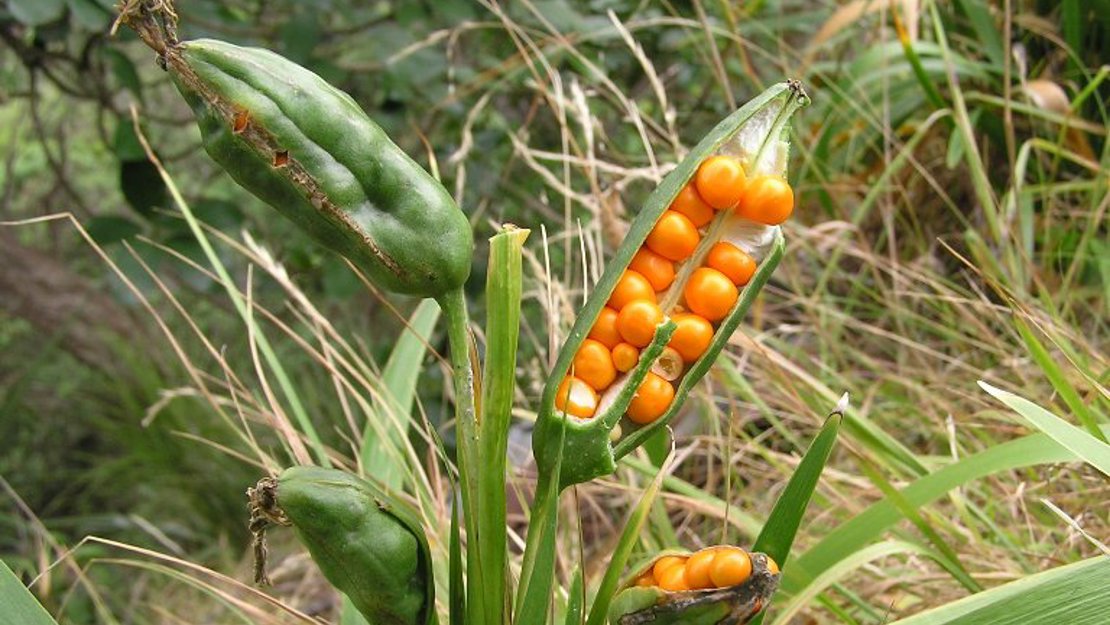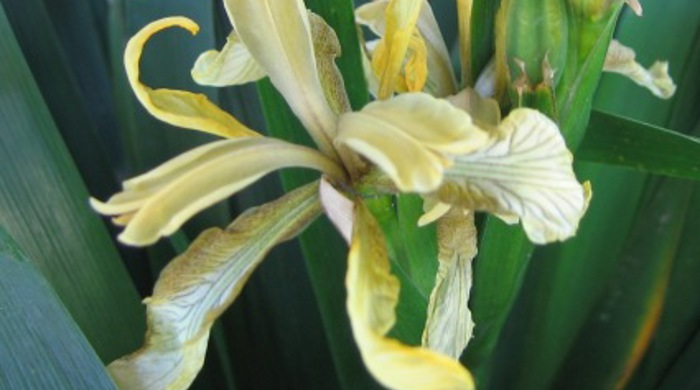Iris foetidissima
Stinking iris
Family: Iridaceae
Origin: Europe, North Africa

Regional Pest Management Plan (RPMP) status
- Not a legally declared pest
General description
Clump-forming rhizomatous perennial herb < 80 cm tall. Leaves are sword-shaped, leathery, dark green and foul-smelling when crushed. Flowers are pale yellow with green-brown/brown-purple markings and borne on erect stem. Fruits are three-sided capsules that split open to release many round, red seeds.
What you need to know
Although stinking iris is not a legally declared pest plant, it may still be invasive in some situations. Consider lower risk alternatives for your garden, such as native plants.
Habitats
Disturbed forest, forest and riparian margins, shrubland, scrub, coastal areas, wasteland, roadsides.
Dispersal
Seeds dispersed by birds and gravity. Vegetative spread from rhizome fragments, dispersed by water. Human-mediated dispersal through dumping of garden waste, deliberate plantings and movement of contaminated soil and machinery.
Impact on environment
Forms dense clumps, displacing native vegetation and preventing native seedling recruitment. Poisonous to humans and livestock.
Control
Site Management
Follow up treated areas 3 times per year. Encourage natural regeneration of native plants or replant treated areas where possible after 2-3 treatments to establish dense ground cover and minimise reinvasion.
Recommended approaches
Physical control
Method: Dig out.
Plant parts requiring disposal: All parts.
Disposal options: Remove to greenwaste or landfill.
Biocontrol
Biocontrol is currently not available for this species.
Community agrichemical control recommendations
No qualifications: Foliar spray with 100ml glyphosate green per 10L of water.
Certified handler/experienced agrichemical user: Foliar spray with 100ml glyphosate green per 10L of water and 20ml penetrant.
Caution: When using any herbicide or pesticide please read the label thoroughly to ensure that all instructions and safety requirements are followed.





